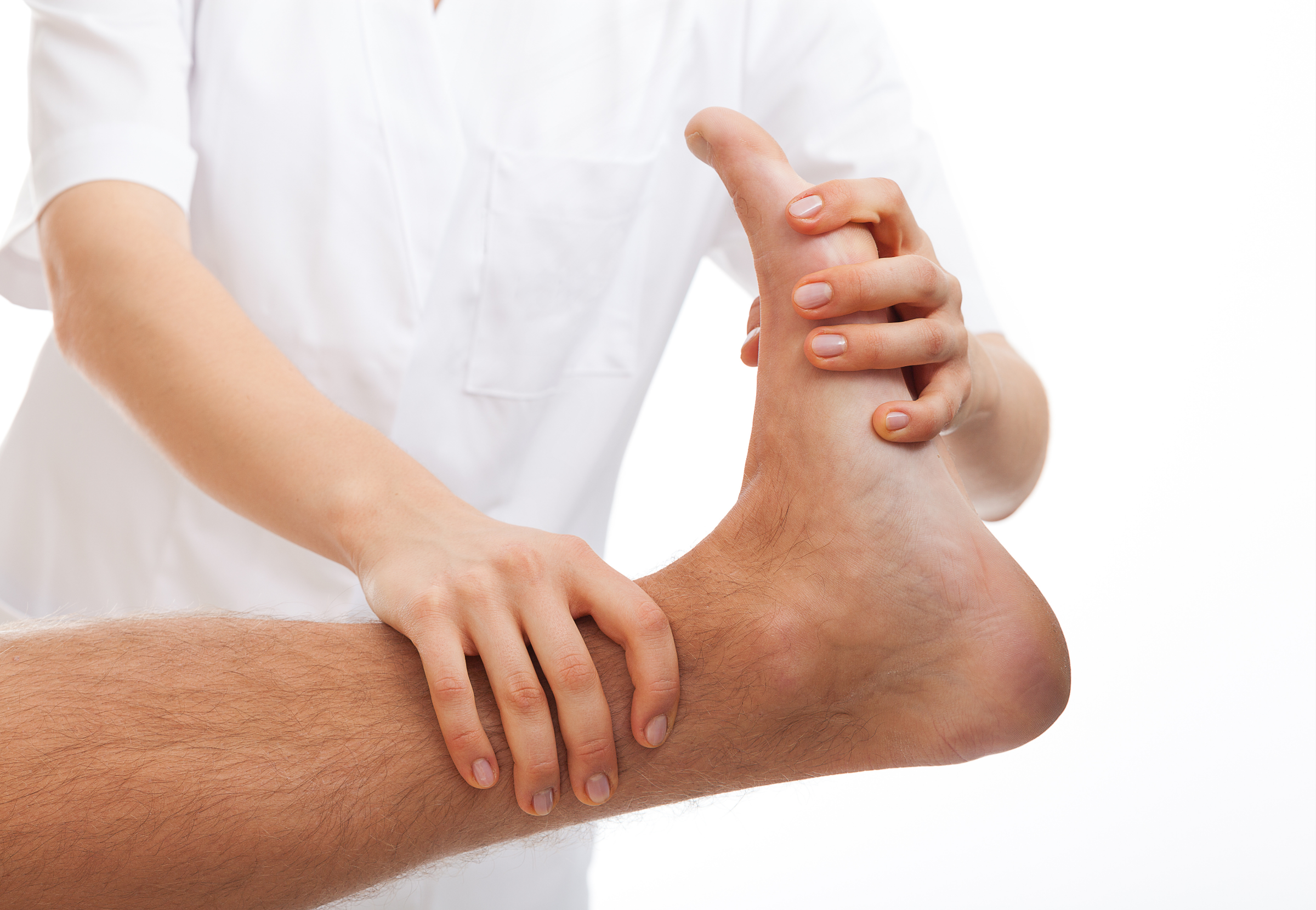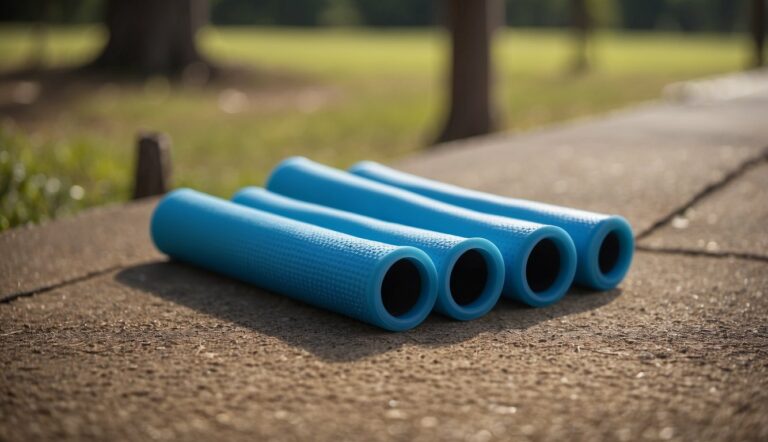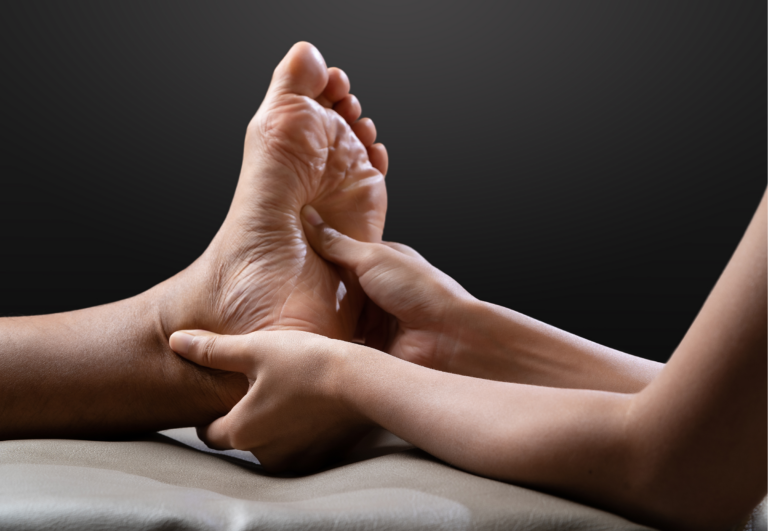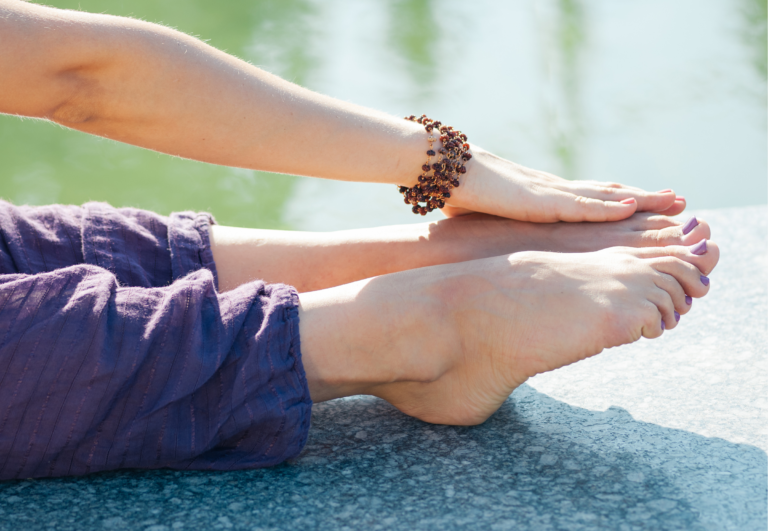Incorporating Toe Spacers in Foot Rehabilitation: Enhancing Recovery and Alignment
In my experience with various foot care practices, I’ve found toe spacers to be a simple yet impactful tool. These devices, which fit comfortably between the toes, are instrumental in maintaining proper toe alignment, which is a cornerstone of overall foot health. When toes are correctly aligned, there’s a notable reduction in pressure on the joints and soft tissues of the feet.
Using toe spacers is a proactive step in foot rehabilitation, particularly for those recovering from foot-related injuries or surgery. I’ve observed their effectiveness in reducing discomfort and aiding in the healing process. They encourage the toes to assume their natural positions, which can contribute significantly to a swift recovery and improve long-term foot health.
Adopting toe spacers into a foot care regimen isn’t complicated. They are widely available and come with the added convenience of being ready to use right out of the box—requiring no special fitting or complicated maintenance. The benefit of toe spacers is clear: they are an accessible aid in promoting the well-being of our feet, essential for anyone seeking to improve foot function and comfort.
Incorporating Toe Spacers in Foot Rehabilitation – a Step-by-Step Routine
Incorporating toe spacers in foot rehabilitation can help address issues such as hammertoes, bunions, and plantar fasciitis by promoting proper toe alignment and strengthening foot muscles.
Here is a step-by-step routine for using toe spacers in foot rehabilitation:
- Initial Adjustment: Start by wearing toe spacers for short periods of time, such as 10-15 minutes, to allow your feet to adjust to the sensation and alignment. Gradually increase the duration as comfort allows.
- Seated Toe Splay: While seated with your feet flat on the ground, insert the toe spacers between your toes. Practice spreading your toes apart and then relaxing them. Repeat this several times to help stretch the toe muscles and ligaments.
- Toe Curls: With toe spacers in place, attempt to curl your toes down towards the floor and then release. This exercise can help strengthen the muscles under your feet and improve flexibility.
- Marble Pickup: Place a few marbles on the floor and use your toes to pick them up and place them in a bowl. This exercise can help improve dexterity and muscle strength in the toes.
- Heel Raises: Stand with toe spacers inserted and slowly lift your heels off the ground, shifting your weight onto your toes. Hold for a moment, then lower your heels back down. This will help strengthen your calf muscles and the supporting muscles of your arch.
- Walking with Toe Spacers: Incorporate short walks with toe spacers to help your feet adjust to the new alignment while performing a functional activity. Start with just a few minutes and gradually increase as tolerated.
- Balance Exercises: Perform balance exercises such as standing on one foot with toe spacers in place. This can help improve proprioception and stability.
- Stretching: Stretch your calf muscles, Achilles tendon, and plantar fascia regularly, as tightness in these areas can contribute to foot problems. Toe spacers can be worn during these stretches to enhance the alignment of the foot.
- Progressive Loading: As your feet become stronger and more accustomed to the toe spacers, incorporate them into more dynamic exercises like squats or lunges to challenge your foot stability further.
- Consistent Use: For best results, use toe spacers consistently as part of your rehabilitation routine. Monitor your progress and adjust the intensity and duration of exercises as needed.
Consult with a healthcare professional, such as a physical therapist, before beginning any rehabilitation routine, especially if you have an existing foot condition or injury. They can provide personalized advice and ensure that toe spacers are appropriate for your specific needs.
Benefits of Toe Spacers in Rehabilitation
Toe spacers are a simple yet effective tool in enhancing foot rehabilitation efforts. They primarily offer improved toe alignment and spacing which can lead to better foot function.
Enhancing Foot Muscles and Joint Stability
I’ve found that consistent use of toe spacers can lead to stronger foot muscles and improved joint stability. These devices encourage the muscles in the foot to activate and work as they are naturally intended to, promoting better balance and mobility. The realignment provided by the spacers also aids in stabilizing the joints of the toes, which can contribute to a more stable and secure footing.
- Muscle Enhancement: Toe spacers encourage active use of foot muscles, which can strengthen them over time.
- Joint Stabilization: Proper toe alignment helps stabilize toe joints, potentially lessening the risk of injury.
Improving Circulation and Reducing Inflammation
The separation of toes can significantly improve circulation within the foot, which is an important factor in reducing inflammation and aiding in recovery. Improved blood flow ensures that essential nutrients and oxygen are delivered to the injured areas, which can help in healing processes. This is especially beneficial post-injury or post-surgery, where efficient circulation can greatly impact recovery speed.
- Circulation: Better toe alignment may enhance blood flow to the feet.
- Inflammation Reduction: Less compression on the toes can lead to reduced inflammation, aiding comfort and recovery.

The Role of Material and Design in Toe Spacer Efficacy
When selecting toe spacers for foot rehabilitation, the material and design are critical for maximizing benefits. The right choice can enhance comfort, foot alignment, and muscle conditioning.
Silicone vs Foam vs Gel Spacers
Silicone:
- Pros: Durable, flexible, easy to clean
- Cons: May be more expensive than foam
Foam:
- Pros: Soft, lightweight, usually inexpensive
- Cons: Less durable, may compress over time
Gel:
- Pros: Cushioning effect, can offer targeted relief
- Cons: May retain heat, less breathable than silicone
| Material | Pros | Cons |
|---|---|---|
| Silicone | Durable, flexible | May be pricier |
| Foam | Soft, light | Less resilient |
| Gel | Cushioning | Can retain heat |
Sizing and Fit for Optimal Use
I’ve found that proper sizing and fit are essential for the efficacy of toe spacers. They must align with the foot’s anatomy to prevent slippage and ensure the spacers apply gentle but effective pressure to correct toe alignment.
Key Considerations:
- Snug Fit: Not too tight to cause discomfort, nor too loose to move around
- Foot Size: Match with the spacer’s size for optimal alignment and comfort
A well-fitting toe spacer will make a noticeable difference in the rehabilitation process, supporting the foot in a natural position and promoting muscle strengthening.
Application and Use Cases for Different Foot Conditions
Toe spacers are specialized tools I recommend for managing certain foot conditions by promoting proper toe alignment. They offer non-invasive support and can be particularly beneficial in the treatment of bunions, corns, hammertoes, and aiding recovery for athletes.
Managing Bunions, Corns, and Hammertoes
Bunions: A common painful condition where the big toe deviates inward, causing a bony bump on the side of the foot. Toe spacers help by:
- Keeping the big toe in a straighter alignment
- Reducing pressure on the bunion
- Preventing the progression of the deformity
Corns and Hammertoes: Corns often occur due to friction from toes rubbing against each other or tight footwear. Hammertoes are characterized by an abnormal bend in the middle joint of the toe. Toe spacers aid in:
- Separating toes to minimize friction, thereby preventing corns
- Maintaining better toe positioning to address hammertoe discomfort
Support for Athletes and Active Recovery
Athletes: High physical demands on the feet can lead to conditions like plantar fasciitis, often caused by repetitive impact and improper foot mechanics. As an expert, I suggest athletes use toe spacers to:
- Maintain proper toe alignment, which can contribute to a balanced distribution of weight
- Support the foot’s natural shape, potentially mitigating the risk of overuse injuries like plantar fasciitis
Active Recovery: Whether dealing with foot pain or working towards optimal foot health, active individuals benefit from incorporating toe spacers into their recovery regimen, because they:
- Encourage natural toe spread during post-exercise cooldowns, promoting circulation
- Aid in the alignment of toes, which can speed up recovery by alleviating stress on joints
By incorporating toe spacers into treatment and recovery protocols, we can provide a supportive environment for our feet, addressing some of the root causes of common foot conditions.
Integrating Toe Spacers into a Foot Care Routine
Toe spacers are invaluable for those seeking to enhance their foot care routine, particularly when targeting alignment and reducing pain. Regularly incorporating these simple tools can lead to improved foot function and comfort.
Instructions for Safe and Effective Use
Before starting the use of toe spacers, it’s important to select the right size for your feet to avoid unnecessary discomfort. Begin with just a few minutes of wear each day, gradually increasing the time as your toes adjust to the spacers. Incorporate gentle stretching exercises to enhance flexibility and benefit from the spacers’ alignment properties. Always listen to your body; if you experience pain or discomfort, reduce the wearing time, and consult with a foot care professional if issues persist.
Initial Adjustment Period:
- Day 1-3: Wear for 5-10 minutes per day.
- Day 4-7: Increase to 20 minutes per day.
Progressive Increase:
- Week 2: 30 minutes per day.
- Week 3: 1 hour per day.
Maintenance, Cleaning, and Hygiene
To maintain the effectiveness and longevity of toe spacers, it’s critical to keep them clean. Wash your toe spacers after each use with mild soap and warm water, rinsing thoroughly to prevent any soap residue. Allow them to air dry; do not expose them to direct heat. Store them in a clean, dry place to avoid bacterial growth. Proper hygiene practices, including washing your feet before and after using toe spacers, can reduce risks of infections and enhance overall foot health.
- Cleaning Steps:
- Remove spacers from feet.
- Rinse under warm water.
- Apply a small amount of soap and gently rub the surface.
- Rinse off soap completely.
- Pat dry with a towel or air dry.
Common Questions and Professional Insights
In this section, you’ll find answers to common concerns regarding the use of toe spacers during foot rehabilitation and the importance of professional guidance in your treatment plan.
Addressing Concerns on Discomfort and Adjustment Period
When beginning to use toe spacers, discomfort may occur. Many individuals experience a period of adaptation where the toes adjust to the new alignment. It is essential to start with short periods of wear, incrementally increasing the duration as comfort allows.
Frequency of use is typically as follows:
- Week 1: 5-15 minutes per day
- Week 2: 15-30 minutes per day
- Subsequent Weeks: Gradually increase until wearing for 1 hour or more is comfortable
Managing discomfort effectively means listening to your body. Should pain persist, reduce the use and consult a healthcare professional.
Consulting Healthcare Professionals for Customized Treatment Plans
Customized treatment plans are vital for effective rehabilitation, taking into account individual foot structure and health concerns. Healthcare professionals can offer tailored advice, ensuring that toe spacers aid in the healing process without causing additional issues.
For pain relief and optimal results, the frequency and duration of use should be discussed with specialists, such as podiatrists or physical therapists, to fit your specific needs.
Table: When to Consult a Professional
| Situation | Action Suggested |
|---|---|
| Initial Discomfort | Monitor and adjust wearing time |
| Persistent Pain | Seek professional advice immediately |
| Plan Optimization | Schedule regular consultations |
Toe spacers can be a valuable tool in foot rehabilitation, but they should be used as a part of a comprehensive treatment plan developed in consultation with healthcare professionals.





